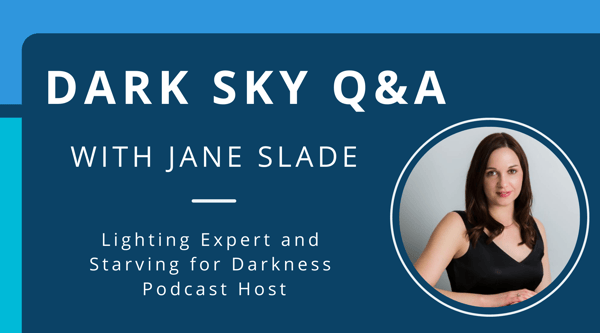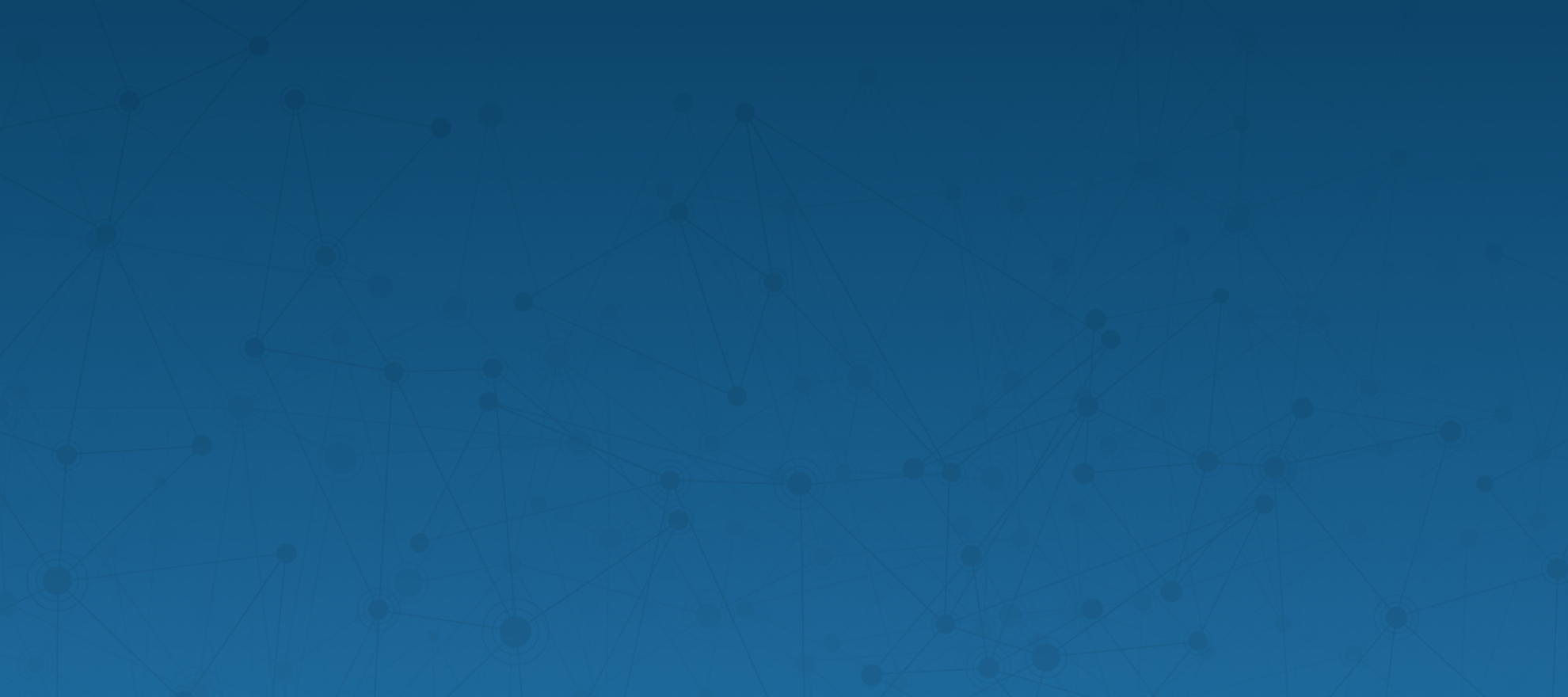 A few months ago we dove into an episode of the Starving for Darkness podcast discussing the Dark-Sky Movement. Jane Slade, host of Starving for Darkness, agreed to sit down for an interview to dig even deeper into the Dark-Sky movement.
A few months ago we dove into an episode of the Starving for Darkness podcast discussing the Dark-Sky Movement. Jane Slade, host of Starving for Darkness, agreed to sit down for an interview to dig even deeper into the Dark-Sky movement.
Thank you Jane for sitting down with us today. Let’s start at the beginning for our readers. Can you define the Dark-Sky movement and why it is important?
The Dark-Sky movement is working to bring back the night sky for all living things. While the term Dark-Sky movement is commonly used, I actually prefer the term Darkness movement. When you hear of the Dark-Sky Movement, it sounds like something that’s very complimentary but not necessarily needed. It sounds as if you’re just missing a view of the stars and that’s not really true.
We need a view of the stars for wildlife. It’s a point of survival for them.
When we call it the Dark-Sky movement, we miss our message because people don’t know what they’re missing and that's why we want to expand into the Darkness movement.
Light pollution isn’t actually out at the dark sky, it’s right here every day on our phones. The fact that we wake up at the full light of the day, very often with a device in our hands, and we continue that brightness until we switch off the bedside lamp. What that does is it never brings your internal mode of thinking to a different cadence or you never get impacted by the darkness to change your internal landscape and thoughts.
We used to spend a lot of time next to fires, looking at fires. It was recently said that the blue light is counteracted by the infrared that you feel from fires so that when we separate out all of this light with LED’s, when we’re shining that on us all the time, we’re not getting the balancing power of fireside light. We've pulled and teased at the spectrum emitted from light sources and that is going to have an impact on how our body’s feel, how we think, and the landscape of our thoughts.
I would say the Dark-Sky movement is the starting place for all of these thoughts but that it’s being expanded to a greater movement. It really has a lot to counteract in terms of how much information is coming through our phones, which are these light driven devices and screens, all the time in our faces, right in our retinas, so the Darkness movement is a better description for the work that’s ahead for humanity.
When you say you’re expanding from the Dark-Sky to the Darkness movement, because of the impact to human circadian rhythms, wildlife, and light pollution. Could you elaborate more on what that entails?
About a year ago at this time, I had a book idea that was coming to the surface discussing wildlife, to base it on my column about how light impacts wildlife. I thought this frame for the book was the natural next step. However, I had sort of an epiphany moment where I realized that wildlife is not enough to change the minds of people or the tides of industries. It has never been.
If we rely on trying to educate humans about how wildlife is impacted to make the change, we would’ve seen that across many other factors of climate change whether it was plastic in the oceans, or global warming. If wildlife were enough, then we would be doing a much better job. Quite frankly we are a self-centered species, probably all species are but we have the power.
The epiphany moment was that I had to tell this narrative from a point of view of what people were actually missing and it wasn’t the dark sky. People don’t really think about that. When it comes to light pollution, the thoughts that arise sound more like ‘I feel stressed all the time, I feel like social media is unrelenting, I’m not sleeping as well,’ and things like that. So all of these reasons are what I’ve been writing about recently. On my Instagram account, I focus on how we're all suffering from light pollution from a more meditative point of view.
What are the biggest culprits to the Darkness movement?
Our devices, exterior lighting, and signage, they all have big impacts. With signage, instead of the old billboards, which were once lit with luminaires, now they’re backlit with screens and they’re much brighter. Streetlights certainly contribute to general ambient light at night but those can be controlled to turn lights down.
Here in Cambridge, MA we dim lights down to 30% of their output at certain times of night. There’s a lot of really bad lighting, like flood lights, so I often say if we could start by getting rid of the really bad lighting it would make a big difference.
In general, it’s not any one source.
When you look at light pollution maps, there are blooms of light all over the planet. The culprit is humans. We have all the lighting technology here and now to not have light pollution because we can control it to turn it off. We have fantastic optics that can direct light right where we need it. It’s not rocket science, it’s putting the light where you need it. Turn it off when you don’t need it. If we did just that we would be able to light human activity and also reduce the impact of wildlife.
Another factor is that other people have installed really bright lighting in their houses. Brighter is sexier and it’s more appealing. Our visual systems are attracted to it so there’s an attraction like a moth to a flame when we’re at the store. There’s no discussion of how that light will make you feel in that space or afterward.
We’re going to the store and buying these super bright bulbs because it seems better, but then we go home and we have these interior experiences that are overlit and can be really negative for our circadian rhythms.
The thing that makes it cyclically worse is that when you have a bright light, it makes things seem darker. So if I shine a bright light and then go into a dark room, my eyes are adapted to the brighter light and then that dark room seems darker.It is a vicious circle where we're getting brighter and brighter and the darkness is deepening.
So there is no one culprit. It’s coming from all over.
What are the obstacles towards a mass adoption of dark sky oriented products?
The number one obstacle is awareness. So many people just don’t know. I have a podcast called Starving for Darkness that dives deeper into it and I do so much grassroots education but it’s not an intuitive concept that light causes an impact on wildlife.
When we say light pollution it often doesn’t even create a reaction in people. Many people think it’s more of a nuisance and not life threatening to living things. That’s the intuition but it just isn’t true. It has a major impact on wildlife, on all forms of wildlife.
We’re all basically tuned to the light and always have been, which is why I consider the natural daylight cycle the Rosetta Stone and what we should be emulating as much as possible. But the thing is humans feel safer around more light.
It’s a hard argument to make to someone to say this might make you feel a little less safe but in the long run darkness at night is much safer for you and all living things. It's a psychology problem.
However, I will say that once you sit down and explain how light pollution is a new aspect of climate change that has popped up in the last century and it creates a terrible amount of impact on wildlife including changing how plants grow to inhibiting pollination or migration, people understand. They get it, and want to make a change. There’s a lot at stake when we shine light at night.
Once you walk people through that process, then my strategy is not to take the light away, which feels like a security blanket, but it’s to say no, there’s something really beautiful that you’re leaving on the table and that’s a view of the night sky and the dim almost cradle-like quality of darkness that comes when you can actually let the visual simulation just rest.
The obstacle is awareness and getting over the argument that more light is safer. I try to avoid the more light is safer argument head on because I think it’s much better to actually sell the beautiful and immeasurable benefits of darkness rather than just take away this feeling of safety.
Is there a relationship between dark sky and energy efficiency? Diving into upgrading lighting to support the Darkness movement, do you foresee any pricing obstacles in your research?
The first chapter of LED’s was all about efficiency. They were the most efficient light source, winning the Nobel Prize in 2014 for their efficiency. In the earliest LED lighting installations, we tried to go as efficient as possible, which is the bluest LED lights - they are the most efficacious.
We installed 5000K LED lighting everywhere and then it turned out that blue light is really triggering for wildlife and humans. Now we have to go back and correct and do a better job designing.
It’s really the initial investment that communities would be willing to make to either correct or replace older technologies if they didn’t get the initial LED installation. I wouldn't say cost per fixture comparison is the obstacle, it’s just a general investment in the project to begin with.
As for energy efficiency and the Dark-Sky relationship, once LEDs started to get installed, what happened was we installed more light than we needed. We went way overboard on the light. We were talking in terms of lumens per watt and it didn’t matter if it was more than you needed so we started lighting up our exteriors at night like daytime.
That has created a lot of problems. I feel like the argument of energy efficiency is over. We have mostly replaced LEDs and now we need to actually get the right amount of light. It was this pursuit of energy efficiency which led to a ton of overlighting. Instead of focusing on what we needed, we focused on what we could squeeze out of these fixtures and that led to a much brighter nighttime environment.
LEDs have come a long way. It’s a funny thing but they are both our curse and our cure. They were our curse in how we originally used them, installing very stimulating, bright blue 5000K sources. They were far more powerful than needed for many lighting installations and we really overdid it. But if we pull back, we can actually start fine tuning wavelengths of LEDs to make them less impactful on wildlife, to increase visibility for humans, and still keep that energy efficiency.
Do you see dark sky becoming an attribute to utilities, namely for efficiency programs to emphasize or promote?
This is absolutely a topic for utilities, for anyone in the lighting industry who wants to create a sustainable future and that’s the goal. It is our goal on the Starving for Darkness podcast to show that darkness is a part of the model. It’s a part of the business model of the lighting industry.
By selling light fixtures including lighting controls we can have the light when we need it, and we can turn it off. We can use the energy when we need it and we can save the energy when we don’t.
Can you provide an example of a dark sky oriented project that stands out from the rest? If so, what were the drivers of this project?
We did a solar dark sky installation in a town called Topsfield, MA. What was really great about that project was the dark sky luminaries are historical so they kept the feel of this historic little town. They also were solar so we did not have to trench for wiring. This is a major benefit of solar as trenching can disrupt habitats. In this case, it would’ve disrupted a new sidewalk renovation that they just completed.
There is also a lot of activism coming up on the horizon.
My goal is to get the stars back in every major city by 2030. To raise awareness, I am organizing a Dark Sky Night. On the winter solstice in the Northern hemisphere [where I’m located], which is December 21st this year, will be the first Dark Sky Night of 10 winter solstices through 2030 to raise awareness.
The goal is to turn lights out between 7pm to 10pm so that we can get the stars back then and there and let people see the difference between the night sky they currently have and what they’re missing.
The hope is that people will take care of their own regions and start to enliven conversations between community members and municipal leaders who control the public lighting. I think there’s a lack of conversation that’s happening across the world and that a lot of exterior lighting is just left on because nobody’s even made a decision. It's not that they’re even needing to be on or wanting to be on, it's just that on is the default currently.
I hope that by starting to have these nights through 2030 we can start to enliven these conversations, show people what they’re missing, and get better each time because it’s not a small task to get half the world to turn their lights off. We’ll have some communities that do a great job of it and then other communities can learn from these models.
I also do a ton of advocacy on Instagram. There is a burgeoning community of darkness protectors there. I’m also writing a book entitled Starving for Darkness, and we also have the podcast by the same name.
I am creating as much awareness as possible through social media, through the Dark Sky Night event, through podcasting, and writing for both my book and column; I would say those are the main arms of activism for me currently.
Do you foresee government regulations regarding the Darkness Movement?
Yeah absolutely, I see it going hand in hand with sound. If I want to go out at 2am and play my boombox at the highest level, I’m not allowed to do that. It’s considered trespassing. I refer to light and sound as sensory experiences that are shared.
We are creating sensory pollution, not just with light actually but with sound too.
Whales actually use astronavigation. Scientists studied humpback whales and they consistently navigated within 5 degrees of their 5,000 mile journeys through open water and treacherous conditions. Always within 5 degrees, and often within 1 degree. They hypothesized they had to use a map of stars and the moon to be that precise.
Whales also communicate through whale songs and the octave of whale songs has changed from all of the water boat vehicle sounds they hear. With lights blocking the stars and boats having additional lights, we’re interrupting these migrating patterns. This species is now being impacted by both light and sound pollution.
I absolutely believe that in the coming decades municipalities will smarten up and pass laws to protect the night, darkness, wildlife, and human well being from light at night.
Since this interview took place, the City of Pittsburgh announced the Dark Sky Ordinance. This ordinance is “requiring that all newly constructed and renovated City-owned facilities and parks comply with Dark Sky Lighting principles and mandates that all streetlights to be replaced as part of the streetlight retrofit utilize Dark Sky-compliant fixtures.”1 This ordinance is one of the firsts for a city of this size.
Efficiency, lifetime costs, and quality have been big themes in lighting, now it's dark sky. Do you expect we'll see a similar adoption curve to this feature?
I think we’ll see that dark sky is a must in the future. We’ll think very hard about illuminating spaces with light that is projecting horizontally or even upward. I think those days are numbered for haphazard lighting installations at night. Another factor is so much of our lighting is installed and left uncontrolled. I think those days are numbered as well with lights getting installed without lighting controls.
Lighting controls really catch us red-handed by implying that we are not in control of our fixtures and it’s true. We leave so much lighting unattended, unused, and on throughout the night and the future is controlling the light to be on only when we need it.
Thank you Jane for sitting down with us. Where do you recommend our readers go to learn more about the dark sky?
The International Dark-Sky Association (IDA) is amazing. The IDA is a wealth of knowledge and is a great starting point for people who want to get their feet wet in the movement. There’s also LightAware and Softlights, both of which are also great resources.
You can go to my Instagram @anatomyofnight and my website www.anatomyofnight.com. I also have a book in the works with a 2022 goal.
 Jane Slade MID, LC, IES, Lighting Expert and Host of Starving for Darkness
Jane Slade MID, LC, IES, Lighting Expert and Host of Starving for Darkness
.png?width=500&name=2019%20e%20news%20spotlight%20logo%20(1).png)




